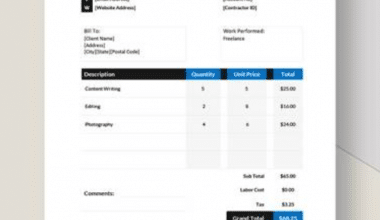Over time, the sales and marketing industries have experienced significant change. Consumers today have increased purchasing power, informational access, and influence over the entire purchasing process.
Therefore, salesmen also need to adjust. It is no longer effective to pressure an uninterested customer into making a rapid purchase. Instead, you should get knowledgeable about inbound sales methodology. So relax as we discuss more on inbound sales and processes to get there.
In a customer-centric strategy, inbound sales are concerned with gaining the trust of new clients. By providing useful content, insights, and solutions, inbound sales invite customers to contact you rather than ramming sales down their throats.
What is Inbound Sales
A contemporary strategy called inbound sales emphasizes giving customers value first before pitching them your goods or services. Potential clients discover your company through content marketing, social media marketing, and other internet channels, and this is where the process gets started. They interact with this information and gain brand knowledge. Later, a member of your sales team contacts the lead to continue nurturing it.
The secret to inbound sales is having an empathic salesman. To determine whether a lead is a good fit for their product or service, an inbound sales professional connects with them and finds out about all of their needs.
A salesperson who handles inbound calls adopts a specialized, consultative style. They keep gaining potential customers’ trust while determining how their solution can best alleviate their problems. Of course, the objective is to close a deal, but not at the price of the satisfaction of the client.
The Inbound Sales Process Foundations
Four crucial steps make up the inbound sales process:
#1. Identify
Sales representatives identify potential leads at this stage who have expressed interest in their goods or services by reading or visiting their website. Learning more about a prospect’s wants and interests entails examining their digital footprints.
#2. Connect
During this stage, sales representatives contact prospective leads using tailored messaging that speaks to their particular problems and wants. The goal is to establish a conversation and build rapport with the prospect while emphasizing understanding their predicament and providing support.
#3. Explore
In this step, sales representatives have in-depth, consultative discussions with prospects to learn about their unique pain points, objectives, and difficulties. This phase focuses on information collection and probing questions to determine how your service or product may meet their demands.
#4. Recommend
Sales representatives propose a customized solution that addresses the prospect’s particular challenge based on the information gathered during the exploration phase. The emphasis is on adding value and establishing your product as the best fit for their needs.
How Does Marketing Aid Inbound Sales
The inbound sales process begins with lead generation through inbound marketing activities like content, social media, paid advertising, and search engine optimization (SEO). These strategies aid in drawing potential clients to your website where they can discover helpful information that caters to their demands and difficulties.
Leads should be nurtured through the sales funnel after being generated. To do this, you must give them the appropriate information at the appropriate moment, assisting them as they pass from the awareness stage to the deliberation stage and ultimately the choice stage. Reps must be adept at comprehending the needs of their prospects and assisting them through the buying process.
Inbound Sales Vs. Outbound Sales
Outbound sales are the conventional sales strategy that includes cold calling, attending trade events, buying contact lists, and other actions that some could consider spam-worthy in the modern world. Outbound sales, then, is the process of “pushing” your message to a huge group of people who may or may not be interested in your product.
Inbound Sales
- The prospect contacts the business in search of information to address their issue, need, or pain point.
- The potential client conducts research, reads blogs, watches webinars, arranges a free consultation, etc.
- The potential customer provides their email in exchange for a free eBook, infographic, tool, etc.
- An inbound salesman might contact them by phone or email.
- Inbound prospects tend to be more informed and engaged at first.
Outbound Sales
- The salesperson approaches the potential customer to present the service or product.
- The salesperson may cold call, cold email, or even cold text the potential customer.
- Outbound leads typically have lower levels of awareness and engagement.
- Let’s be clear: Neither strategy is superior in and of itself. Both strategies can potentially be effective tools for business expansion and revenue growth.
The approach you use will rely on a number of factors, including the kind of business you run, the size of your typical sale, and how knowledgeable your target market is about the solutions you provide.
We’ll examine both sales strategies in more detail so that you can choose which tactic will be the most effective growth avenue for your company.
The Difficulties and Goals of Outbound Sales
Outbound sales might be more challenging to implement than inbound sales for a number of reasons.
#1. Rejection
Reaching out to potential clients who might not be interested in the good or service being offered is known as outbound sales. For sales professionals, this might result in a high rate of rejection and be demoralizing.
#2. Not Feeling a Connection Personally
In outbound sales, professionals frequently contact new clients via chilly emails or phone calls. It may be challenging to establish a personal connection with the client and foster a sense of trust and rapport as a result.
#3. Time-Consuming
As it entails contacting several potential clients and following up with them until they decide to make a purchase, outbound sales can be time-consuming. This can be time- and energy-consuming, and it might not always result in profitable sales. It typically takes 18 calls to get a buyer’s attention.
#4. Adapting Market Circumstances
Sales reps must be aware of these changes and modify their approach in light of the continuously shifting market conditions. Outbound sales may become difficult and unpredictable as a result.
Inbound Sales
With the use of the inbound sales methodology, businesses “pull” potential customers who are interested in learning more about their products. Inbound sales, then, focuses on the needs of the client and adapts to the buyer’s journey while the salesperson serves as a trusted advisor.
There are four steps in the inbound sales process.
#1. Identify possible clients
This is where you interact with the random people who wander into the showroom and turn them into leads. Let’s imagine, for example, that you obtain their contact information and consent to deliver them information via webinars, live chat, or content downloads.
#2. Connect with leads
At this point, you assist the leads in identifying their needs and determining whether or not you may be of use. Here, they are incorporating your suggestions into their objectives.
#3. Explore further
At this point, you start a dialogue with the leads to establish trust and go deeper into their problems in order to determine whether your products are a good fit for them and locate sales prospects.
#4. Offer advice on a solution
After establishing your leads’ trust and confirming that your offering meets their needs, you offer advice (your sales pitch) on why your product is the best choice for their problems. then the leads turn into clients. Since you are only focusing on and communicating with customers who have expressed interest in your business, the inbound sales methodology can be incredibly cost-effective.
Outbound Sales
Through cold calling, social selling, email marketing, and other methods, businesses promote their message or pitch to potential customers. Instead of waiting for leads to approach them as in inbound sales, sales representatives engage leads in outbound sales.
- Carefully chosen outreach
- Quick feedback and outcomes
- Direct communication with potential customers Management of the speed of marketing and selling
There are five steps in the outbound sales process.
#1. Identify Prospective Clients
Prepare your team to reach out to them by defining your target market and market segments.
After determining who you want to contact.
#2. Generate Leads
You can do this by hiring a lead generation team internally, acquiring a database, or contracting out the creation of sales leads to a third party.
#3. Contact and Qualify Prospects
The outbound sales team now makes contact with the list of contacts via phone or email to determine whether they are a good fit for your product or service.
#4. Demonstrate your Resolution
To demonstrate all the advantages of your product or service to the leads, the sales staff sets a meeting or a demo.
#5. Seal the Deal
If all goes as planned, the consumer signs the contract.
Outbound sales and cold calling are sometimes confused, however, outbound sales are actually the outcome of data-driven research, whereas cold calling may be an attempt to collect leads through random calls.
The Benefits of Combining Inbound and Outbound Marketing
To expand your pipeline, combine inbound and outbound sales strategies. For instance, it has been commonplace in recent years to largely rely on content marketing, a subset of inbound marketing, to generate leads online.
All of that is good. Therefore, after you have those inbound leads, you can follow up with them, qualify them, and close the business using outbound tactics. Calling leads who have downloaded your content but have not responded to your follow-up emails is one example.
Inbound Sales Process
According to the inbound sales process, salespeople should nurture their client relationships from the awareness and contemplation stages of the consumer journey to the deal’s closing and beyond, acting as a trusted counselor rather than putting all of their attention into closing a sale as soon as feasible.
Every prospect who engages with a brand or company through inbound sales receives a personalized, tailored approach depending on how they interact with the brand’s or company’s product or service offerings and even related material.
How Can Inbound Sales be Successful
In conventional sales, customers may be seen as prospects to be persuaded, demonstrators to be persuaded, or simply a deal to be closed. The closing of the transaction as well as the likelihood of the business closing a sale in the future is put at risk when the buyer and seller’s aims aren’t compatible and when the buyer feels used.
Therefore, the inbound sales funnel is focused on providing value to each potential customer that goes above and beyond what they may otherwise find. The first step in this procedure is to recognize and comprehend the buyer’s journey, which consists of three stages:
- Awareness
- Consideration
- Decision
The Four Inbound Sales Steps
#1. Recognizing
Finding the correct business possibilities early on can frequently mean the difference between a successful business and one that fails. It’s essential to have a full understanding of your buyer’s journey because knowing what to look for aids in the creation of a predictable, scalable sales funnel.
#2. Connect
To determine whether a lead should prioritize a goal or challenge, inbound salespeople communicate with leads. These leads turn into qualified leads if the customer chooses to do so.
#3. Examine
To determine whether their offer is a good fit, inbound salespeople explore to find out more about the objectives or difficulties of their qualified leads. Learning about the competing products a prospect is looking at at this time might help you better provide a value proposition that differentiates your company.
#4. Recommend
Your ultimate objective while giving advice is to persuade the prospect that your product is uniquely suited to meet their demands and alleviate their problems.
What is the Goal of Inbound Marketing?
A business strategy known as inbound marketing draws clients by producing useful information and experiences that are specifically catered to their needs. Inbound marketing establishes connections with customers and addresses issues they are already experiencing, but outbound marketing disturbs your audience with content they don’t always want.
What are the 4 Pillars of Inbound Marketing?
- Pay Per Click (PPC) advertising
- Search engine optimization
- Outbound
- Inbound marketing
What are the Four Stages of Inbound Sales?
The Attract, Convert, Close, and Delight phases of the inbound marketing approach are its 4 phases. These actions will encourage customers to become brand ambassadors rather than strangers.
How do I Start Inbound Sales?
Identifying prospective customers who might be interested in your product or service is the first stage in the inbound sales process. Market analysis, social media monitoring, or client profiling can all be used for this.
How do You Handle Inbound Sales Calls?
- Establish a call procedure or model.
- Use statements and questions to direct dialogue.
- Accurately identify the caller.
- Write the product and service descriptions in advance.
- Plan for the purchasing process.
- Learn to deal with objections.
Conclusion
The Inbound Sales Methodology outlines each salesperson’s action that corresponds to each stage of the buyer’s journey from stranger to customer. The new technique recognizes that Inbound Sales is a process that requires effort on your part. You accomplish this by employing tools that enable you to customize the sales process so that it appeals to the exact right leads, in the exact right locations, and at precisely the appropriate time in their purchasing journey.
Related Articles
- Inbound Marketing vs Outbound: How to Scale any Business Combining both Strategies
- Outbound Sales: Meaning, Strategy & Best Software to Use
- CALL CENTER SOFTWARE: Best Inbound, Outbound, and Virtual Software
- Inbound Marketing: Effective Inbound Marketing Examples
- What is Outbound Marketing Strategy? Examples & Tools






